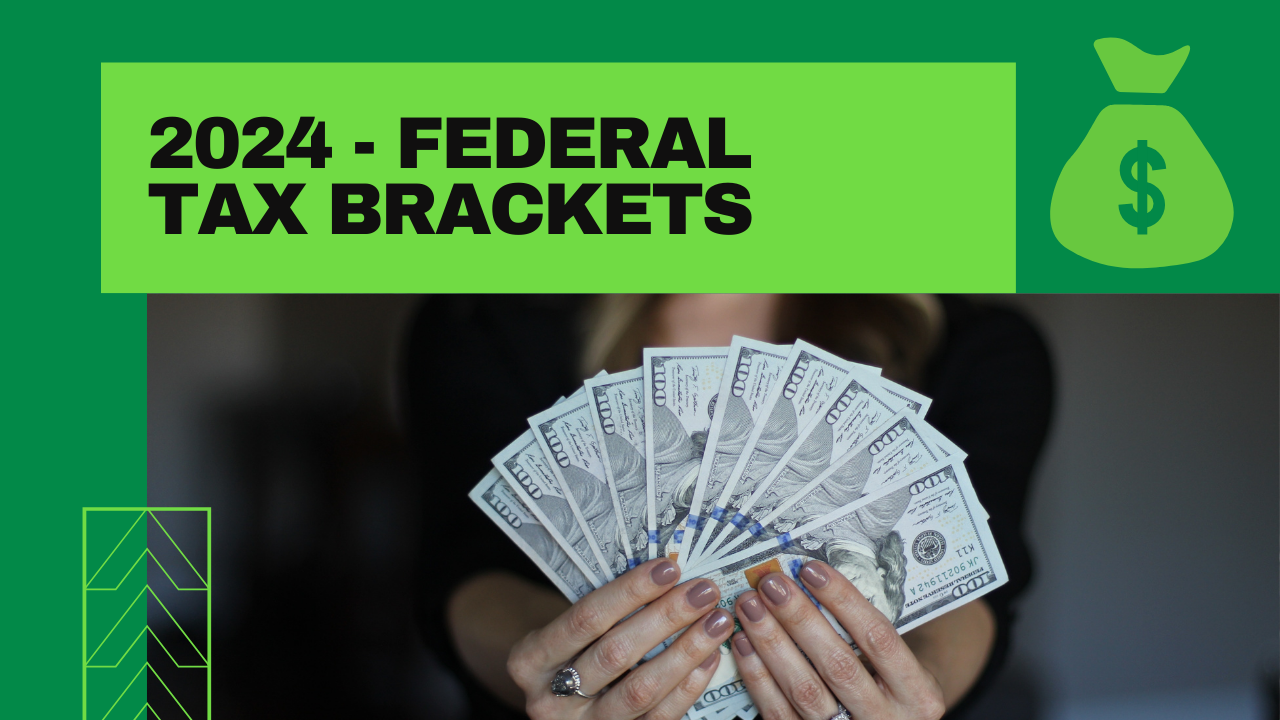In 2024, there are seven federal income tax rates: 10%, 12%, 22%, 24%, 32%, 35%, and 37%.
How much taxes you pay depends on your income and your filing status (single, married filing jointly, married filing separately, or head of household). These 2024 tax brackets apply to the income you earned in 2024 which is then reported on your tax returns that are completed and filed in 2025. View the 2025 tax rates here.
2024 Tax Brackets
| Tax Rate | Single | Married Filing Jointly | Married Filing Separately | Head of Household |
|---|---|---|---|---|
| 10% | $0 to $11,600 | $0 to $23,200 | $0 to $11,600 | $0 to $16,550 |
| 12% | $11,601 to $47,150 | $23,201 to $94,300 | $11,601 to $47,150 | $16,551 to $63,100 |
| 22% | $47,151 to $100,525 | $94,301 to $201,050 | $47,151 to $100,525 | $63,101 to $100,500 |
| 24% | $100,526 to $191,950 | $201,051 to $383,900 | $100,526 to $191,950 | $100,501 to $191,950 |
| 32% | $191,951 to $243,725 | $383,901 to $487,450 | $191,951 to $243,725 | $191,951 to $243,700 |
| 35% | $243,726 to $609,350 | $487,451 to $731,200 | $243,726 to $365,600 | $243,701 to $609,350 |
| 37% | $609,351 or more | $731,201 or more | $365,601 or more | $609,351 or more |
How Do Tax Brackets Work?
Luckily your income is not all taxed at the highest rate possible. Based on how much you made, your earnings will be split up into multiple different tax brackets. That means you will end up paying different tax rates for your income rather than paying 37% across the board.
They way I like to look at tax brackets is comparing them to buckets. Once the first bucket is full, the money overflows and spills down into the next bucket (the next tax bracket). Each bucket can only hold a certain amount of earnings and is taxed differently. The more you make, the more buckets you fill. More buckets means more tax rates that apply to your income. Lets look at an example –
Based on BLS data, the current median earnings of full-time workers is $1,165 a week or $60,580 a year. That would make a single or married filing separately individual fall into three tax brackets while those filing as head of household or married filing jointly into only two tax brackets.
As a single filer, your first $11,600 of earnings fill the first bucket (tax bracket) and are taxed 10%. Then your earnings keep filling the second bucket until it is full as well. That second bucket (tax bracket), taxed at 12%, holds your income from $11,601 to $47,150. But you still have earnings that spill into a third bucket (tax bracket). The remaining $13,430 of your earnings would fall into the third bucket and be taxed at 22%.
In total you would owe $8,380 in taxes for your $60,580 in earnings. $1,160 from the 10% bracket, $4,266 from the 12% bracket, and $2,954 from the 22% bracket.
If you were married and filing jointly taking home the same earnings you would be taxed like this: Your first $23,200 of earnings fill the first bucket (tax bracket) and are taxed 10%. Then your remaining earnings ($37,380) spill into the second bucket (tax bracket) which is taxed at 12%. Because the second bucket is really big, none your income spills out.
In total you would owe $6,806 in taxes for your $60,580 in earnings. $2,320 from the 10% bracket and $4,486 from the 12% bracket. That is more than $1,500 less than a single filer.
References:
https://www.bls.gov/news.release/pdf/wkyeng.pdf
© EuduringFinances, 2024. All Rights Reserved.
Related Posts –



One thought on “2024 Tax Brackets and Federal Income Tax Rates”
Comments are closed.